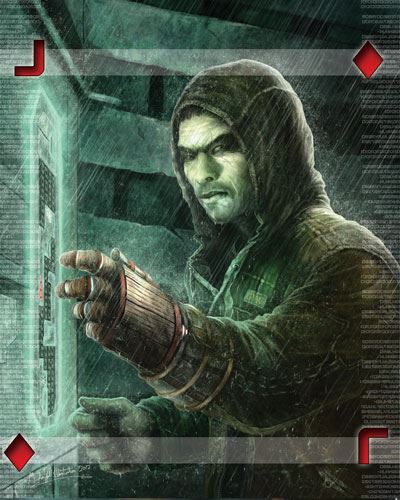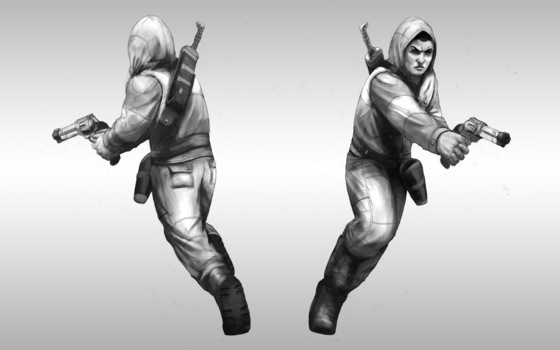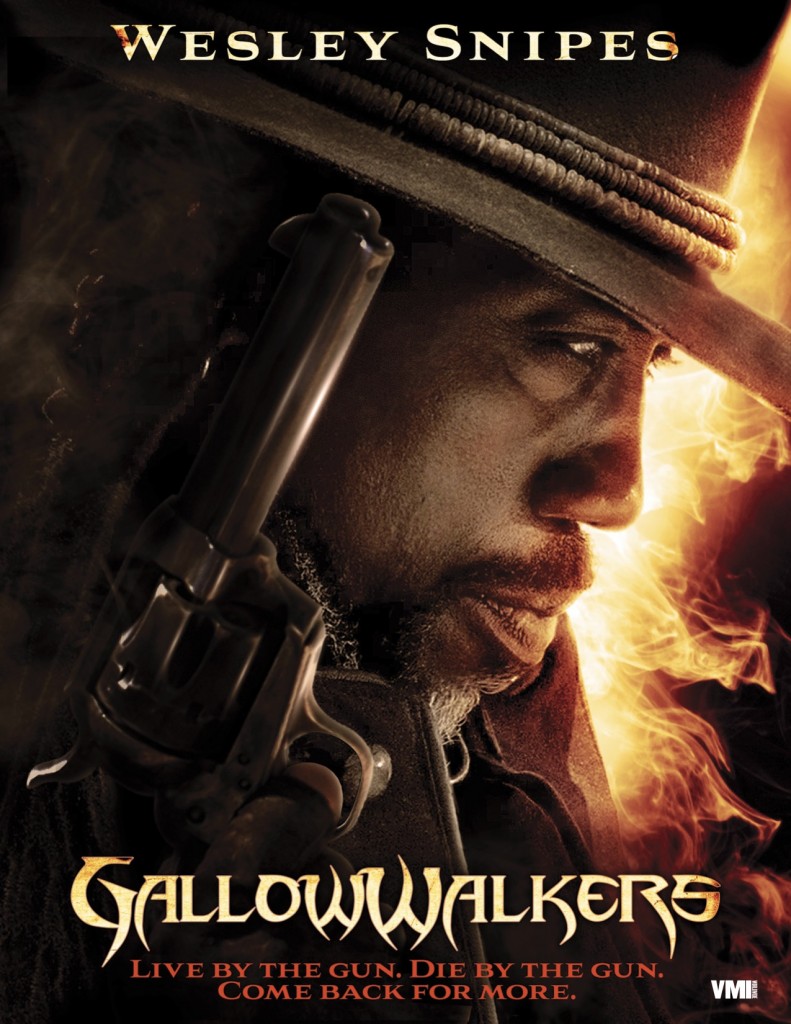Stan! is a name that many gamers are familiar with. Along with Hyrum Savage, Stan! is a co-founder at Super Genius Games where he is both a Senior Producer and Designer. In the run up to Christmas he managed a successful Kickstarter for the Littlest Shoggoth, a Cthulhu for kids book, which is now at the printers. He is currently overseeing the production of Strike Force 7: Season 1, a new series of Savage Worlds adventures based on Strike Force 7 — Savaged and leading the development of a fiction line for Super Genius Games.
The Interface Zero 2.0 kickstarter blew past $21K and so Stan! is also working on the Japan Sourcebook for the RPG and has kindly agreed to chat to Geek Native.
 Sometimes country sourcebooks for RPG go badly wrong. I’m not talking about a “By Night” sourcebook for a World of Darkness game failing to paint a player’s favourite city in the right light but those times a culture or history gets horribly managed. This Scottish blogger still remembers one of his gaming group exploding with rage when RIFTS: England was published and included background on England, Wales, Ireland and Scotland. What makes you confident you’ll be able to do Japan justice?
Sometimes country sourcebooks for RPG go badly wrong. I’m not talking about a “By Night” sourcebook for a World of Darkness game failing to paint a player’s favourite city in the right light but those times a culture or history gets horribly managed. This Scottish blogger still remembers one of his gaming group exploding with rage when RIFTS: England was published and included background on England, Wales, Ireland and Scotland. What makes you confident you’ll be able to do Japan justice?
First of all, I certainly agree that many RPG sourcebooks about real world places can sometimes fail to capture the real essence of the place and people. Generally, those feel like they were written by authors who only have book knowledge (or TV/movie knowledge) of the location. On the other hand, I’ve also read some that were written by authors who knew the locations SO well that they wrote sourcebooks that were only really useful and interesting to other people with that kind of intimate knowledge. The trick, in my opinion, is to find a way to walk a middle ground. To know the place well enough to write something that feels TRUE to those who live or have been there, but still make it approachable and usable to those who only know the place through fiction or news coverage.
I lived and worked in Japan for five years, and have stayed fairly close to people and events there in the years since I returned to the U.S. I’m also a fan of Japanese media, so I have a pretty good sense of what the average gamer thinks about the country and culture. I think that puts me in a pretty good place when it comes to creating a sourcebook that feels true to both the people who know Japan intimately and those who only know it through manga, anime, and movies.
Cyberpunk is a strong genre. There’s a tech focus and sometimes a touch of fedualism with gangs and corporate hierarchy. Do you see any challenge in the strength of the cyberpunk setting meeting the essence of a Japanese setting? How can you portray both?
Not at all. In fact, the earliest cyberpunk fiction was often set in or made strong reference to the Japan of the near future. In part this was because in the 1980s and ’90s Japan was perceived (somewhat fearfully) as an unstoppable juggernaut of advanced technology. But another reason is that the culture there still carries echoes of its feudalistic past. As a rule, the Japanese people are willing to trust their leaders and captains of industry to do what is right for the whole of the country. They are willing to subsume their own desires and goals to work for the collective good—indeed, the culture generally looks down on those who seek individual glory and advancement.
All of that meshes perfectly with the most common cyberpunk settings, and the world of Interface Zero in particular. Average people are more or less drones, or corporate serfs. The average citizen lives in a world that he or she can hardly hope to affect in any meaningful way. It is the heroes of the stories that rail against this stifling environment and try to strike a blow for individuality, humanity, and Truth (with a capital T) … or merely to live life by their own terms, rather than societies.
Now, the fact is that in the twenty-plus years since the inception of the cyberpunk genre, Japan has changed some. Political scandals, corporate backstabbing, and simple cultural evolution have made the Japanese people a bit more cynical and self-protective, and moved the country further away from its feudal past. Real life twenty-first-century Japan is not like what William Gibson imagined it would be back in 1984. But the elements are all still there, and it doesn’t take a great deal of imagination to project a future that would allow the country to fall back into a course that would lead to a classically cyberpunk future.
What do you think gamers are looking for in a country sourcebook? Flavour and insights into the world, more stats for equipment and characters, professional adventures or a magical mixture of all three?
Certainly a mix of all three. I don’t know a gamer out there who doesn’t want some kind of crunchy new equipment or game rules to help give his or her character a special edge or ability. But country sourcebooks should, I think, lean more heavily on background material—details of the location and the people that player characters will meet there. The bigger trick, though, is creating a good mix of setting material that is useful to the player and not just the game master.
One tricky part of any RPG is providing enough background material so that the players can feel like they understand the world that their characters live in, but still providing the GM with specific details and behind-the-curtain information so that he or she can keep things mysterious and exciting. A character in the world should know about all of the major companies and personalities through their public appearances and interactions with the media, but they really have no idea what happens behind closed boardroom doors or in private mansions. Just the way we know the names and faces of politicians, celebrities, and CEOs, but don’t actually know what’s happening in the halls of power or in the members-only social clubs.
I think one of the biggest mistakes that location-based sourcebooks make (no matter what game they’re for) is not clearly delineating common information that anyone can have from secret information that is for the game master only.
Why get involved with Interface Zero and the Gun Metal Games team?
Because they asked. [laughs]
Seriously, that’s the basic reason. I mean, I’ve had a hankering to write something in the cyberpunk genre for a while, but I didn’t have any actual plans to DO anything about it in the near future. Then David (Jarvis) called me up and asked if I’d be interested in leading development of a Japan sourcebook for Interface Zero, and I didn’t even have to think twice.
There aren’t many active cyberpunk properties out there. The real world has moved in a slightly different way than Gibson and Sterling and the other core cyberpunk authors imagined, and so our projections of the near future have shifted with reality. But there’s definitely something appealing about a hardcore cyberpunk setting, just like there is in 1950’s-style jet-pack futurism. It’s a fun slice of the future that could have been. Now, Interface Zero isn’t ALL retro-futurism. It has a strong internal narrative that explains how and why the world ends up the way it does within the game setting. But I don’t think that there are many actual futurists who think that sort of thing really is in store for the world.
You’ve done work with Viz Entertainment for manga like Biomega. Does that mean we’ll see a manga influence in Interface Zero’s Japan Sourcebook?
In that manga has ALREADY influenced the world of Interface Zero, I’m sure the answer is yes, but I don’t have plans to try to force that sort of thing into the setting. So many of the tropes of cyberpunk, though, come straight out of manga and anime that it’s hard to imagine a Japan sourcebook that wouldn’t owe SOMETHING to the works of Masamune Shirow (Ghost in the Shell, Appleseed), Katsuhiro Otomo (Akira), Kia Asamiya (Silent Möbius), Tsutomu Nihei (Biomega), and other creators of cyberpunk manga and anime.
Why do you think manga and anime is growing in popularity in the West?
I think it has to a lot to do with the fact that a generation of kids who grew up as anime and manga fans is now old enough to be in positions of power in Hollywood. They’re producing mainstream American TV and movies that have a strong Japanese influence and are thereby making the actual Japanese comics, shows, and movies less foreign-seeming to the average American viewer and reader.
Look at something like “Teen Titans, Go!” which, when it debuted, was a little freaky for large portions of the audience. But anyone who knew anime and manga understood exactly what was going on. As that show gained popularity, the audience became more favorably inclined toward watching actual Japanese shows in the same vein. Over the last ten or fifteen years, there’s been a lot of that sort of thing going on to the point where “manga” is just another style of comic, and “anime” is just another style of animation.
You’re leading development on the Interface Zero 2.0 Japan sourcebook because the Kickstarter has gone so well. You were made an early stretch goal in order to lure those pledges in. Are you surprised at the success?
Well, I don’t really think that I had much to do with the Kickstarter’s success. That’s all on the shoulders of Interface Zero itself and the great job David and the others did in organizing and running the fund drive. It’s harder than it looks, I can tell you from my own experience. They did a GREAT job.
You never know for sure what concepts the audience will flock to and spend money on when you’re dealing with concepts and promises, as opposed to books and products they can pick up here and now. I had a ton of faith in Interface Zero 2.0, so I can’t say I was surprised by the level of support it got. But, on the other hand, nothing is a sure thing . . . so it was a relief to see that they were able to get so much traction with the Kickstarters and gamers out there.
You’ve been successful with Kickstarter yourself. Do you think the site is an entirely positive addition to the RPG industry or should we be a little cautious?
I caution people about seeing Kickstarter as some kind of fundraising miracle. You have to work hard, and be smart about your budgets, timelines, and what you promise. So far, we haven’t had a big project just go south and fail to produce results . . . but eventually that’s going to happen. In a lot of ways, there’s an extra bit of RESPONSIBILITY that goes with Kickstarting a project. You’re taking people’s money and promising to deliver something—they’re counting on you to live up to those promises. If you’ve planned poorly, you may still find yourself in a bind no matter HOW much money you raised.
And, for the audience, it’s bad to think about Kickstarter as a “pre-order,” for the very same reasons I just mentioned. It’s NOT the same as pre-ordering an item … because the item generally hasn’t even been CREATED yet. You’re investing in something you believe in and, if it works, your pay-out is whatever the backer level entitles you to. But if something goes wrong, and the project doesn’t come together the way everyone imagined, you have to be okay with just having given your financial support to a worthwhile effort. Before you plunk down more money than you’re willing to for merely that, think carefully about how much you believe the creator will be able to follow through on the promises he or she makes in the Kickstarter pitch.
Having a great idea and managing production of a physical product from start to finish are two separate skill sets. I think the biggest “threat” that Kickstarter presents is disappointment—either that the project doesn’t turn out the way the backers hoped, or that it doesn’t turn out at all. Still, overall I think it’s a great boon. It’s certainly allowing game designers and artists to undertake projects they otherwise might never have been able to get off the ground.
What can gamers expect to see from you in the future? Perhaps you’ve some gaming or writing projects you can exclusively mention here?
I’m still spending a significant amount of time managing the production of the book from my last Kickstarter, “The Littlest Shoggoth.” As I was saying before, making a product is a lot different, and a lot more work, than merely creating the content. I wrote and drew that story in 2008 and I’m still spending several MONTHS of work to get the final book produced. There are always little hiccups here and there, but we’re still on target to get the book out by June, as promised.
In addition, I’m supervising the development of a series of Savage Worlds adventures for the “Strike Force 7” setting. This will be for release by Super Genius Games, of course, and we’re trying to time the first release to coincide with the new “G.I. Joe: Retaliation” movie. The concept is that these adventures each represent an episode in the first season of a fictitious Strike Force 7 animated series. We’ll be releasing the adventures one a week, like it was a regular TV show. They’ll be for sale in all the usual PDF marketplaces.
I’m also working on launching a fiction line for Super Genius Games. We’ll have more to say about that later in the spring, but our hope is to start publishing short fiction in electronic format sometime in the middle of the year. The stories will be from a wide range of authors and cover a wide range of genres—fantasy, science fiction, cyberpunk, steampunk, urban fantasy … basically, anything you might categorize as “gamer adventure fiction” will be welcome. You guy’s will have to ask me back again later in the spring if you want more details than that.



